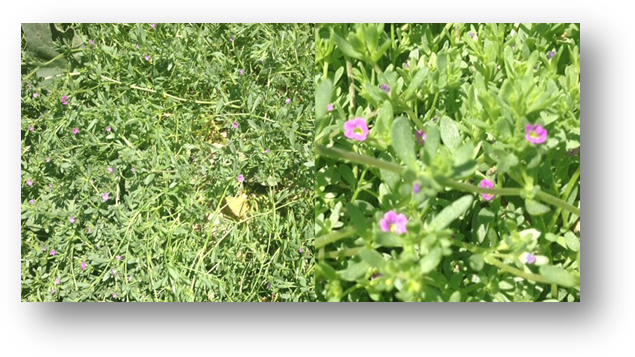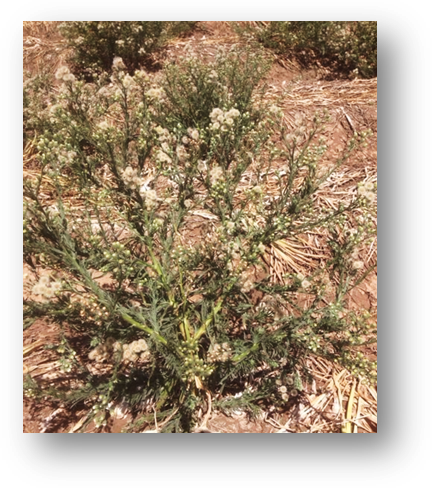Jun 24, 2015
New Weeds!! 2015
The weeds here are constantly changing due mostly to changing production and management practices. These changes are normally slow although once a species becomes widespread, it may seem like it has come out of nowhere. Some have come out of nowhere when they are introduced with seed or equipment from another area but most are not new. Three weed species that have been brought to us in recent years that we have never seen here before are Seaside Petunia, Hairy fleabane and Southern brass buttons.
Seaside Petunia (
Calibrachoa parviflora)
This was found in melons in the Yuma area this season. It is in the nightshade family and is native to the southwestern U.S. It has small petunia-like purple flowers and fleshy, sticky leaves. The stems are thin, creep along the ground and root at the nodes. It can form dense mats. The flowers resemble a miniature version of cultivated petunias.

Images provided by Mr. Bill Fox
(
Conyza bonariensis)
This was found in onions in the Parker Valley this year. It is widespread in California but not in S.W. Arizona. It resembles and is in the same family as horseweed or marstail. Marstail has become more widespread in recent years. Marstail is
Conyza canadensis and Hairy fleabane is
Conyza bonarinsis. Glyphosate- resistant biotypes have been confirmed in California. It is classified as a summer annual but can be found here year round. When fleabane is small it looks very similar to marstail. It is prolific and produces large quantities of seed that are distributed by wind. Unlike many weeds, fleabane seed does not have a long longevity. It is viable for only 3 or 4 years.
 Image provided by Mike Chumley
Image provided by Mike Chumley (
Cotula cornopifolia)
Found in the Parker are 4 or 5 years ago, Brass buttons is often confused with swinecress. The leaves and flowerhead look very similar to swinecress. It is salt tolerant and often found in saline areas. It gets its name from its flowers which are bright yellow, round and thick. It is a perennial in the composite family that was introduced from Europe and Africa. It is relatively short, branches and can root at the nodes.
 Image source: Grower Weeds ID Handbook University of California
Image source: Grower Weeds ID Handbook University of California
To contact Marco Pena go to:
marcop@ag.arizona.edu






 Image source: Grower Weeds ID Handbook University of California
Image source: Grower Weeds ID Handbook University of California


